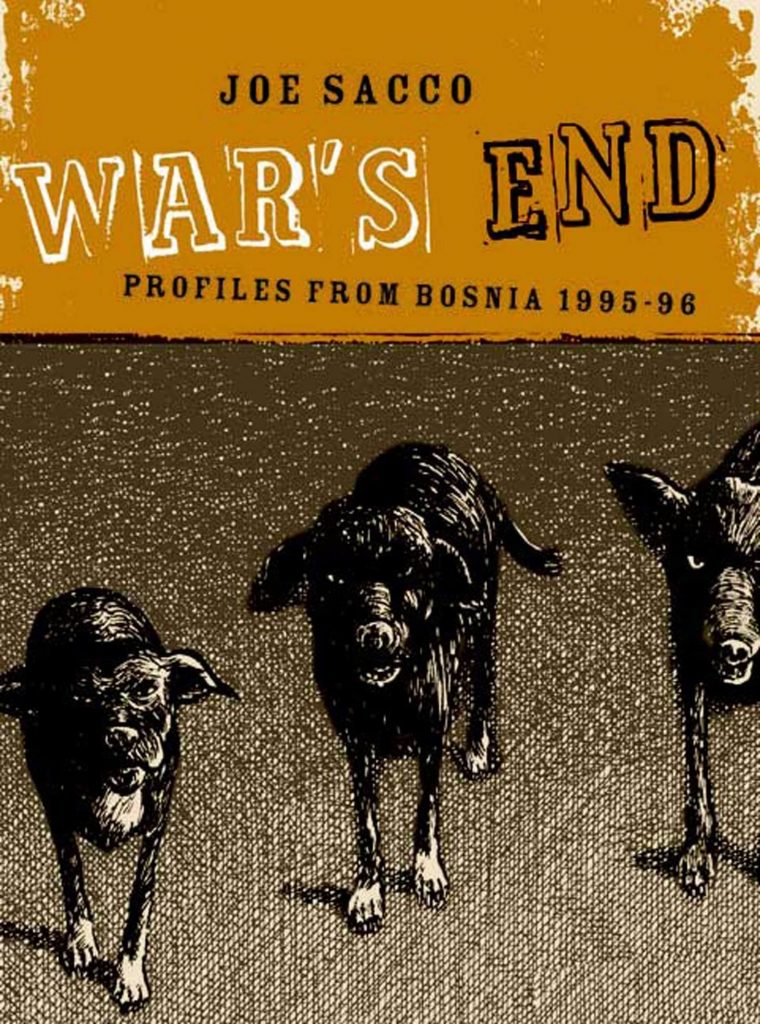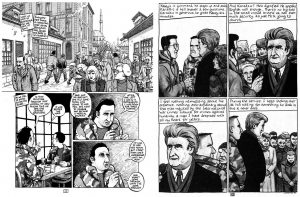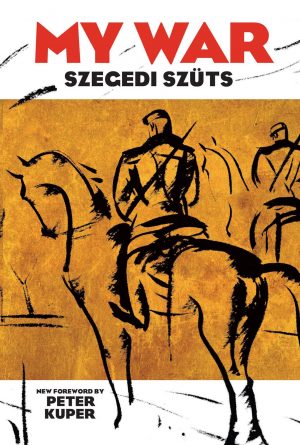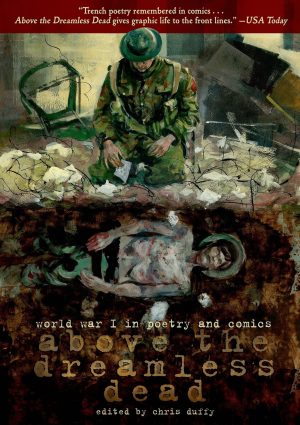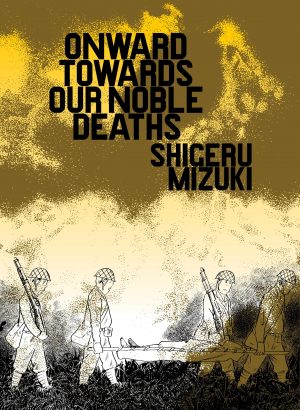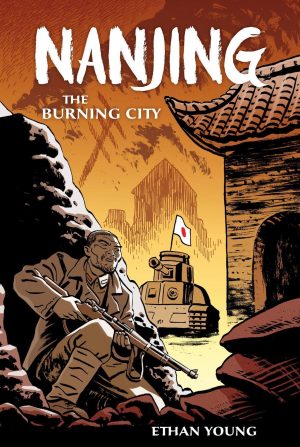Review by Ian Keogh
Joe Sacco’s primary book about his thoughts and experiences of the war zone Bosnia became in the early 1990s is Safe Area Goražde, but he collected enough supplemental stories for other work, and this slim hardcover combines two very different recollections.
Bosnian artist Nebojša Šerić Šoba now lives and exhibits in New York, but in the early 1990s his fame was restricted to his homeland. Bosnia declared independence in 1991, but housed populations identifying as being different ethnically, some associated with larger states. When militias organised by Serbs began to occupy large areas ethnic cleansing was among their atrocities. Šoba’s first reaction to the war is to immerse himself in drugs and alcohol, and when that runs out he concludes he has to do his bit and join the army, because if the Serbs reach Sarajevo they’re likely to kill all the male members of his family and rape the women. He tours Sacco around Sarajevo, portrayed as a conflicted personality, a celebrity soldier interviewed by international media, but a man so bored and uncomfortable serving in the trenches that he volunteers for duty planting landmines. He’s contrasted with the far more gung-ho A, who revels in the chaos, in what’s quite an introspective piece showing life as it was for citizens with the country under siege. A memorable centrepiece is a party occurring during curfew hours. Attendees can’t leave until daylight under pain of being arrested or possibly shot, so a form of forced celebration goes on all night.
Today Radovan Karadžić sits in a jail cell somewhere in the UK, very belatedly convicted of war crimes during his term leading the Bosnian Serbs in the 1990s. ‘Christmas With Karadžić’ occurs shortly after the man himself was pretty well cut off at the knees by his Serbian sponsors, and details Sacco’s accompanying two other journalists attempting to cull some comments from Karadžić as he attends a Christmas service in early 1996. Sacco structures the story as a hunt, emphasising the difficulty of following rumour and accessing permissions, but the core is his thoughts on the mundanity of evil. He notes Karadžić’s comment about how they’ll be counting the living in Sarajevo, not the dead, and struggles to reconcile that with the ordinary person he eventually meets. He’s confused, and unspoken is how that relates to the capacities for good or bad within us all, as his own Christmas celebrations later take place among those Karadžić persecuted.
Both stories are drawn in Sacco’s now very familiar style, some panels as if through a fisheye lens, great busy spreads, exceptionally detailed backgrounds telling their own stories, and every expression supplying personality. A picture-referenced Karadžić is a little stiffer, but Sacco also captures something about him.
Sacco pioneered comics reportage, and it took a while for the world to catch up, but these are two contrasting stories incorporating a melting pot of emotional responses. They’re powerful, honest and thought-provoking. ‘Šoba’ and ‘Christmas With Karadžić’ were later combined with a longer piece Sacco produced about his Bosnian experiences in The Fixer and Other Stories.
